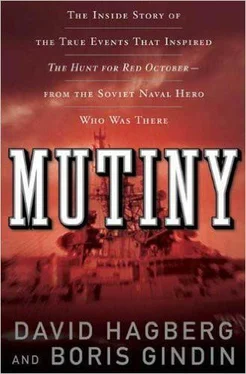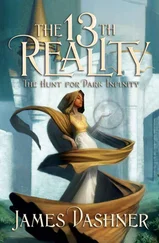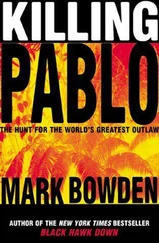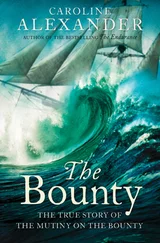Over the history of the Chekas and the KGBs, untold millions of Russians—civilians and military—plus a lot of foreign citizens were stalked, surveilled, arrested, and tried by what were called troikas, or triplets, which were special courts-martial in which three judges, but no jury, listened to the one-sided evidence and passed judgment, very often within minutes.
Witnesses and informers did not have to show up in court to offer their testimony. Most of the time they weren’t even named.
The accused was very often persuaded through his KGB interrogators to cooperate with the court and tell the truth, the whole truth, and nothing but the truth.
All of this was legal under Soviet law, to protect the revolution and later the state from what were called public enemies.
Thousands of mass graves have been found across the Soviet Union, some of the graves containing the bodies of more than one thousand public enemies, each of them with the same wound, a bullet to the back of the head. That’s not counting the untold millions killed by the military or the militia on Moscow’s orders. These are just the known graves of the KGB’s victims.
At one point quotas were established specifiying the number of people who were to be arrested, tried, and executed by the KGB. The public enemies were divided into categories, each with its own quota: former members of the royal familes, clergy, military officers, or Ukranians, Germans, and Tatars. Most often the quotas included the children and entire familes of the accused, under what was called NKVD Order 00486.
Very often a purge would have to be organized in order to fill a quota, decided by the Politburo of the Comunist Party in Moscow. For a time engineers became suspect and thousands were arrested and tried and got their nine ounces. It was the so-called Shakhty Case.
Another time it was medical people who were purged in what was called the Doctors’ Plot.
Or it would be military officers who might have begun to think they were better than everyone else, and might have thought about overthrowing Stalin’s government. This was just before the start of WWII and the vast number of capable officers who got their Russian insurance seriously hurt the Soviet military’s ability to fight back.
But there was some poetic justice even in the Soviet Union during Stalin’s regime when the officers of the NKVD—the executioners themselves—were purged and executed by the tens of thousands. The bells surely rang in Moscow on those days.
And it wasn’t just inside the Soviet Union where executions took place. During the Spanish Civil War the NKVD set up a dozen or more secret prisons in and around Madrid to try and then murder enemies of the state.
Until the treaty between Hitler and Stalin went south at the beginning of WWII the NKVD regularly turned over enemies of the state to the Gestapo, and the Germans very often returned the favor, especially in Poland.
Probably the worst of the KGB executions occurred during the winter of 1932-33 in the Ukraine, where Stalin forced millions of independent farmers, called kulaks, into collectives. It was the new Soviet way of doing business. The kulaks objected, so Stalin sent twenty-five thousand Party militants to bring the 10 million farmers into line, executing the tens of thousands who disagreed by shooting them in the back of the head.
But murder on such a vast scale was too slow, so Stalin ordered that in addition to meting out Russian insurance he would take away all the food. All grain, silage, seeds, and farm animals were trucked off. Secret service agents, with the help of the army, sealed off all the roads and rail lines so that not one scrap of anything edible could get in.
Finally, food and fuel was confiscated from every noncollectivized farm in the Ukraine. That winter, while the nine-ounces operation was killing ten thousand Ukranians each week, people began starving to death by the hundreds of thousands. The kulaks ate their pets, then bark from the trees, even their boots and belts and harnesses. Finally they began eating one another. Sometimes parents ate their infant children.
The final tally of deaths by shooting and by starvation is estimated at around 7 to 9 million or more. Fully 25 percent of the entire population had been killed.
When other executions across the Soviet Union were taken into account—the Latvians, Lithuanians, Muslims, Cossacks, and Germans in the Volga region—the number probably rises to 40 million, not counting the 20 million who died in WWII.
On a much smaller and more personal level, executions were a daily occurrence at gulags such as the one in the Solovetski Islands up in the White Sea, close to the Arctic Circle. The camp was established in the early twenties on the site of a monastery and housed, fed, worked, and buried tens of thousands of public enemies.
This was the granddaddy of all the gulags. Solovki, as it was called, was where the Bolsheviks figured out how the system should be run. Like feeding the prisoners who did the most work the most food. This way the poor producers were the first to die. Like repeatedly tossing a prisoner down a long stairway, outside, in the below-zero weather. Sooner or later the poor man would die. Like forcing the prisoners to remain outside during the summer, when mosquitoes would fill a man’s bowl at dinner so that the soup was as thick as molasses or pack a man’s nose so tightly it would bleed. “…and the taste of them,” one prisoner wrote, “was sweet, like blood.”
It wasn’t long after the camp was up and running at full speed when suddenly one day the place was cleaned up, painted, repairs made, trees and bushes planted, and husbands and wives even allowed to live together. This was paradise for the men and women who’d thought they’d been forgotten. At this point all of them firmly believed that they would live out the remainder of their days here and be buried in some anonymous Arctic grave.The famous Russian writer Maksim Gorky came for a three-day visit. He wanted to see for himself how this model prison camp was being run. Solovki was a Soviet experiment for dealing with what Gorky called counter-revolutionaries, emotional types, monarchists. When he got back to Moscow he wrote that “there is no resemblance to a prison” at that place. Like so many Russians before and after him, he had been thoroughly brainwashed by the system.
As soon as Gorky had left Solovki the guards began digging mass graves, enough for hundreds of bodies. The next day the secret police executioners got drunk and started to work—one bullet to the back of the head of each victim. Most of the time it was enough to cause instantaneous death. But not always. Dead or not, the bodies were tossed in the graves in layers, each layer covered with some dirt.
One prisoner wrote that the next morning the earth was still moving. But the executioners had eliminated what were called the superfluous.
The gulags were not meant to be the same as the Nazis’ concentration camps, a place for mass exterminations. Rather, Stalin wanted to keep the Soviet people in an almost constant state of terror. Which he did.
A prisoner who was scheduled for execution often wasn’t told about the sentence. But stories circulated among the people, and anyone caught in the KGB’s web had to understand that death was not only entirely possible; it was likely.
No appeal could be made, and everyone in the trap knew it. Once caught, the prisoner was totally at the mercy of his captors. Escape was out of the question.
All that was open to the prisoner before execution was imagination. On this evening on the Daugava River downstream from Riga, Sablin and the other mutineers—but especially Sablin—had to be thinking about the price they would have to pay if their scheme failed.
Читать дальше












